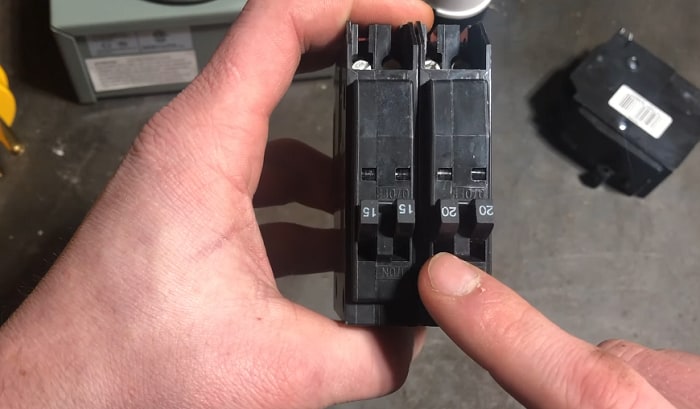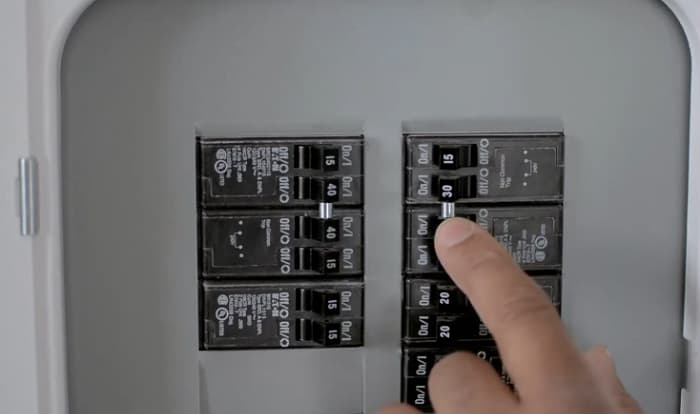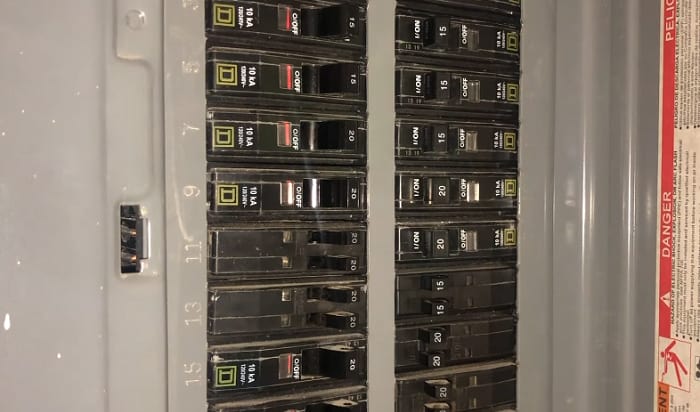A class CTL breaker is one of the electrical safety features developed to deliver electricity to your home properly. It’s a physical way to prevent overloading a panelboard and risk damage to the wirings to the house.
But a non CTL breaker also has its place in the electrical system, and has been around even before the CTL circuit breaker was introduced. In this article, we will compare a CTL vs non CTL breaker and see what’s appropriate for your panelboard.
Table of Contents
What is a CTL Circuit Breaker and What Does CTL Stand for?
The NFPA 70, otherwise known as the National Electric Code, or the NEC, in its 2020 version states under Article 408.54 that panelboards must have a physical way to prevent installing too many overcurrent protection devices beyond what the panelboards were designed, rated, and listed for.
This requirement has been around as early as 1965.
The easiest way to increase the number of overcurrent protection devices in a panel, even beyond its limit, is by using tandem circuit breakers. They are 2-in-1 breakers, meaning two breakers that are designed to fit into one standard breaker slot, and can easily double the number of available circuits in the panelboard.
However, using too many tandem circuit breakers can easily overload the circuit and cause the main breaker to open frequently. Tandem breakers also get hotter than normal circuit breakers and may break down faster.
In order for manufacturers to comply with NEC, they have created “Circuit Total Limiting, or CTL” products that have physical means or rejection features to prevent too many tandem circuits installed. These are the class CTL panelboards and CTL tandem breakers.
Therefore, the definition of CTL on a breaker means Circuit Total Limiting.
A class CTL panelboard is designed to have sections that allow single circuit breakers in some slots and allow CTL tandem circuit breakers in others. The CTL distribution of the slots can be checked in the diagram provided by the panel manufacturer.
One CTL panel, for example, has a notch at the bus finger on the slots intended for tandem breakers that allows a CTL tandem breaker to latch on. Slots that do not have the notch cannot hold a CTL breaker, preventing its installation.
What Are Non CTL Tandem Breakers?
Older electrical installations, like those installed before the 1965 NEC was implemented, do not have CTL features. Non CTL tandem breakers, like the Siemens non CTL breaker, are still produced today as replacements for tandem breakers for those older installations.
Commonly, non CTL tandem breakers sold today have labels, “Replacement use only – Not for CTL assemblies” or other similar labels approved by regulations.
Because these breakers lack CTL features, non CTL breakers can often bypass the CTL feature of a CTL panel and still allow the breaker’s installation on sections not intended for tandem circuit breakers. Some electricians will call these “cheater breakers.”
Pros and Cons
- Safety
CTL features are intended to increase the safety of electrical installation by providing a hard stop that prevents overloading.
Non CTL breakers are still safe to use as long as they are used as intended. Non CTL breakers used in CTL panels defeat the safety provided by CTL features and run the risk of overloading.
- Cost
Non CTL breakers are significantly more expensive than CTL breakers. They can reach twice or thrice the prices of CTL breakers.
Frequently Asked Questions
How do I know if I have a CTL breaker?
If you’re planning to buy a CTL breaker, these usually have rejection features like a notch to ensure that it could be accepted by the class CTL panelboard. If you already have an existing installation, you can check if there are two different tabs or notches in different slots.
Why are non CTL breakers so expensive?
No one knows for sure why, but it could probably be due to the low volume production of non CTL breakers since these are produced specifically as replacements for older installations.
Most of the panels and breakers bought by new home builders are CTL assemblies so CTL assemblies are produced significantly more than non CTL breakers.
I see a Class CTL Type CH breaker. Is it a different breaker?
It is not really different, and it does not change the CTL meaning. CTL breakers come in mainly two types: CH and BR breakers. These two breakers are named after the companies that made them.
CH breakers (made by Cutler Hammer) are slimmer, have tan or black handles, and have a lifetime warranty.
BR breakers (made by Bryant) are thicker, have black handles, and have a 10 year warranty.
Both are CTL breakers, but check the ones that are compatible with your panel.
Conclusion
A CTL and a non CTL breaker have their own distinct uses in electrical installation. Comparing a CTL vs non CTL breaker may help in seeing the difference in safety features and costs. Still, it ultimately depends on the electrical installation – newer panels these days will use CTL breakers while older, pre-1965 panels will use non CTL breakers.
Nevertheless, if you can always ask the help of a certified electrician to help you with your breakers.
Read more about the comparisons:

I am Edwin Jones, in charge of designing content for Galvinpower. I aspire to use my experiences in marketing to create reliable and necessary information to help our readers. It has been fun to work with Andrew and apply his incredible knowledge to our content.



